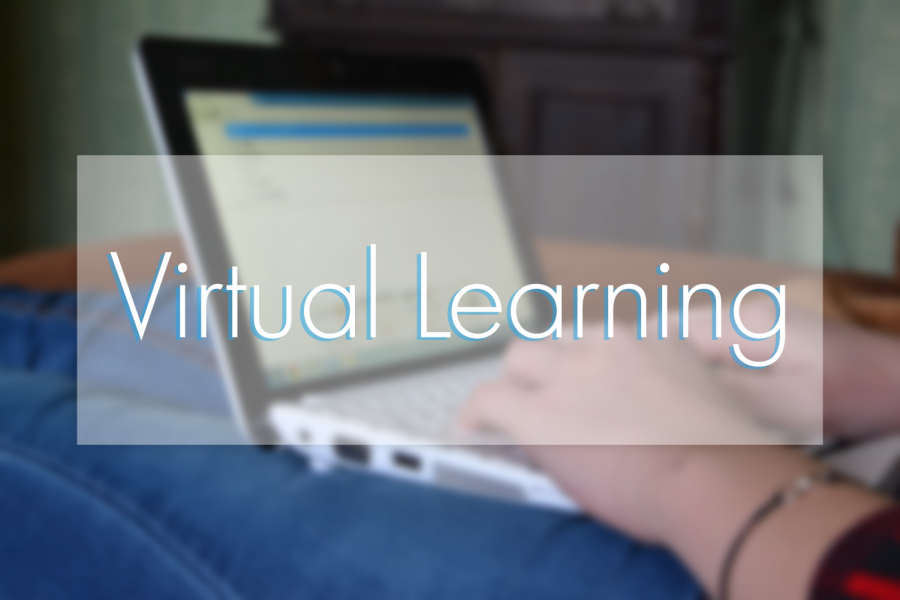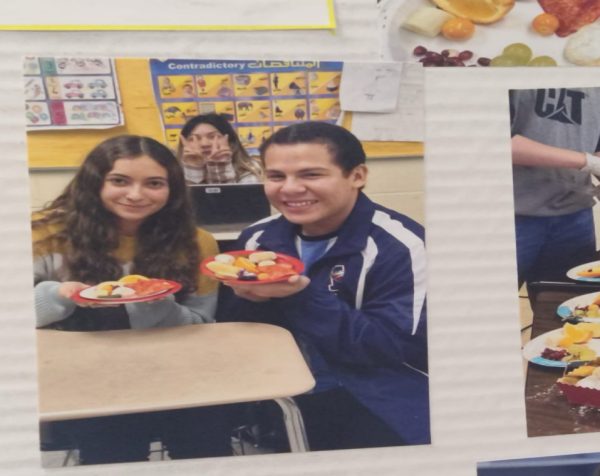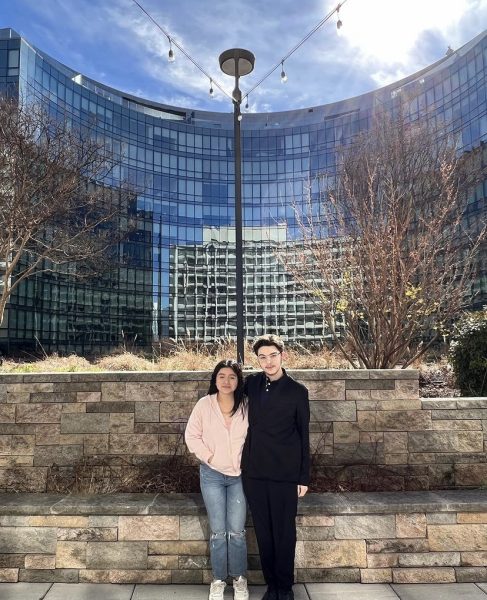Virtual Learning: How Are Students Adjusting?
2020 is a distinctively unprecedented year for a lot of reasons, so much so that calling it such might even be an understatement.
For better or for worse, 2020 has introduced us all to a lot of challenges we never anticipated having to bear the burden of. The most strikingly evident of these challenges, of course, comes by way of the COVID-19 pandemic that has shaken the world and global society to its very core.
Challenging as it might be, the pandemic has forced all of us to live out a future where isolation is order, and congregation is ill-advised. Nowhere is this more significant than it is in schools across the globe. For Liberty students, this has signaled the introduction of a vastly unconventional educational environment. Students and teachers have been participating in 100% virtual instruction since late August, and it’s been quite the adjustment for the LHS community.
Students specifically are having to adjust their day-to-day routines to keep up with the unorthodox schedule. Being responsible and up to date with schoolwork is one of the big points of contention students seem to be building their new routines around.
“I would say I’m a rather flexible person and I’m doing well for the most part with this new way of learning. It’s making me more mindful of what I need to get done, and how to be more responsible and practice self discipline when it comes to doing my schoolwork and reaching out to teachers if I need help on anything, especially after school,” said senior Carlos Ferrufino.
General time management seems to be another theme students are considering when discussing virtual learning. Students are considering how to balance schoolwork, extracurricular obligations, free time; and for some of them, work.
“Virtual learning has been quite the trip so far honestly. It is definitely new to me and I’m adjusting pretty well. I’ve been setting alarms to wake up on time because in the comfort of my bed, I tend to sleep in a little late, so adjusting to waking up on time and remembering when classes start, and generally just being able to start the day can be a bit of a challenge. Also, with having a job, that means I’ve had to change my schedule and work less hours during the week and more hours during the weekends. This is a bit of a challenge as well, because I’ve gotten used to my schedule, and so changing it has been a little rough,” said senior Sarah Dean.
Staying on topic with time; sleep is something that takes up a lot of it, and teens especially require a lot of it to stay healthy. With the freedom to wake up whenever they want most days of the week, the sleep schedules of Liberty students have taken a radical shift. This is especially important considering students haven’t had time obligations related to school since March.
“One thing I had to do to adjust is alter my sleep schedule, which was really hard because I kept staying up all night during the summer months,” said sophomore Dallas Alphonso.
With their routines adjusted, some students are really beginning to see some of the benefits that come with being home during school. Some students are reveling in a sense of freedom that comes from managing and allocating their own time, instead of sticking to a strict academic schedule. A few even seem to be enjoying the lack of social pressure and conformity high school often thrusts onto you.
“Virtual learning is actually much nicer than going into school in my opinion. It gets rid of the stress of being judged and disliked by your peers. It lets one make their own schedule and it teaches how to manage time. Personally for me it’s working out really well. I can make time for other things and multitask without having to sit in a classroom for seven hours a day,” said junior Wyatt Adams.
The virtual model evidently has many positives for students. However, as with anything new and polarizing, it isn’t without it’s kinks. The virtual model has opened the door for many new criticisms, and students are making their voices heard.
“I would prefer if teachers would give more time to do work in class,” Ferrufino continued. “That way when we have other stuff to do outside of school, we don’t need to be overly distressed. I’ve seen some teachers assign work every day, even during asynchronous days. It’s understandable that they want us to be responsible with our time management, but it is still the beginning of the school year after all.”
Some students are even offering their own solutions to particular issues. Some students seem to prefer if synchronous class meetings were done away with entirely, at least for attendance purposes.
“I wish instead of using meetings for attendance, they would just assign a Google document where you sign your name or something, so they know you’re participating” says Alphonso.
On the other hand, some kids are trying their best to be empathetic. This is new for everyone, students and teachers included, so it’s alright if things aren’t 100% seamless from the very beginning. Some adjustment time is to be expected.
“There isn’t really anything I would change. I think the teachers are doing the best they can during such a weird time,” said junior Aaliyah Wright.
Students, teachers, administrators, and even parents are all putting their heads together to make this term as functionally excellent as possible with the resources available. In totality, the virtual model doesn’t seem to be designed as an end-all-be-all replacement for the academic model we’ve grown accustomed to. It’s designed to be the best possible substitute offered under such unusual circumstances.

Braeden Meadows is a 2021 Graduate of Liberty High School and former Managing Editor for The Patriot Press. They are now a part-time freelance journalist,...












karlee salinas • Apr 7, 2021 at 11:27 am
This was a great article. I don’t have any trouble with virtual learning mostly because I work better when I am at home. I do have a little trouble with waking up on time. I often go to sleep really late but I also make it to my classes on time.
Leann Chloros • Jan 18, 2021 at 1:52 pm
Really good article! Personally, I don’t have a problem with virtual learning other than trying to wake up on time because it is so easy for me to sleep through my ten dozen alarms, but I really enjoy doing things at my own pace and going on google meets.
Ethan Fauber • Jan 11, 2021 at 12:24 pm
i was really glad we got to go back. hope we go back again soon.
Nick Kroetz • Sep 29, 2020 at 12:47 pm
Great job as always Braeden. I’m definitely on the fence about it. I despise it, but I would also very much prefer staying virtual over in person. So I’m not very sure what I will do come November when they open back up.
dallas alphonso • Sep 29, 2020 at 12:03 pm
i love virtual learning and hate it but i really love this article
taylor ritenour • Sep 29, 2020 at 9:43 am
I personally love online school a lot better but when i get the chance i’m definitely going back to school !’
Taylor • Sep 28, 2020 at 10:48 am
great article! I personally am doing pretty good virtually and don’t mind it at all. my younger siblings are in school and they are all having a hard time adjusting but i pretty much teach myself.
Taylor • Sep 28, 2020 at 10:44 am
the article was really well-written. when it came to adjusting to all virtual, it was hard at first but now i kinda like it because i can go at my own pace and i am not rushed or pushed and i get to sleep in!
Kayla Moyer • Sep 28, 2020 at 10:01 am
I like that most people have a good attitude towards virtual learning. There are lots of opinions but in end, most people have a good attitude towards it.
Nick Ciampaglione • Sep 28, 2020 at 8:59 am
Good job! I feel like you did a great job of covering every angle you could in this story.
keelycrane • Sep 25, 2020 at 12:21 pm
Great article! I like all the perspectives! I know for me, virtual learning had actually been great because I have always preferred independent work.
Diego Blanco • Sep 25, 2020 at 10:11 am
Its great to see how many people are enjoying the virtual learning, everyone is doing their best to adjust to the new year and that’s fantastic!
Mrs. Moyer • Sep 24, 2020 at 11:01 pm
Well done! I appreciate hearing student voices on this topic.